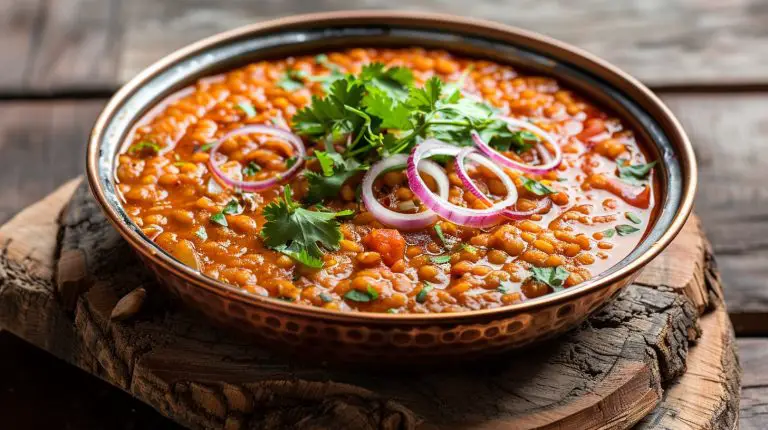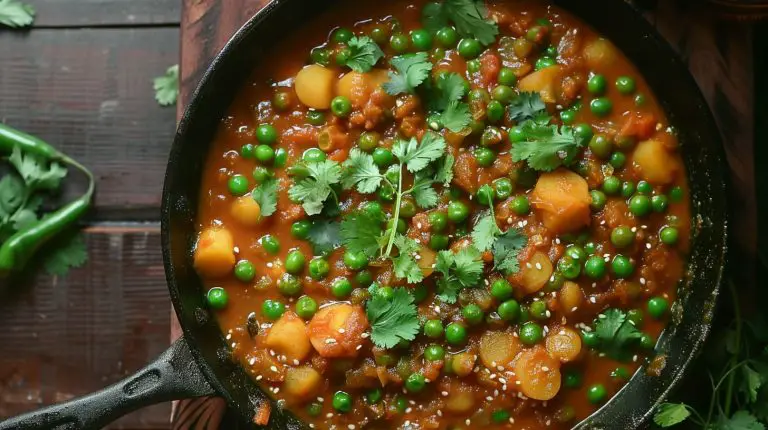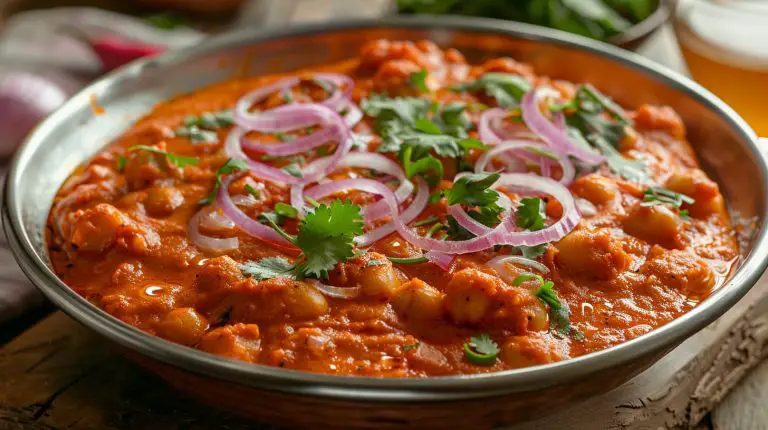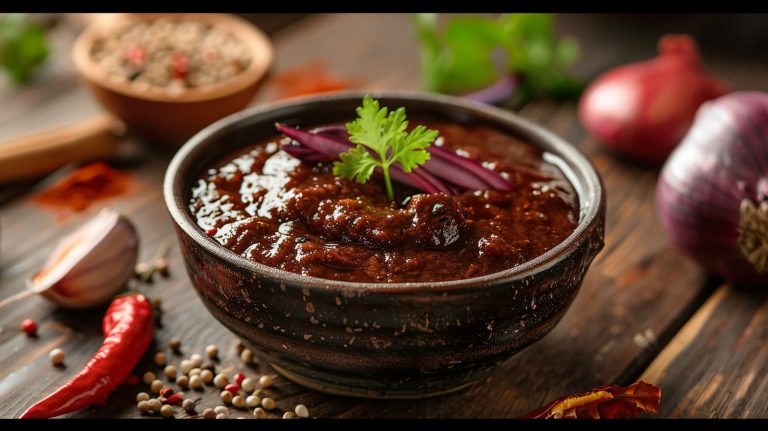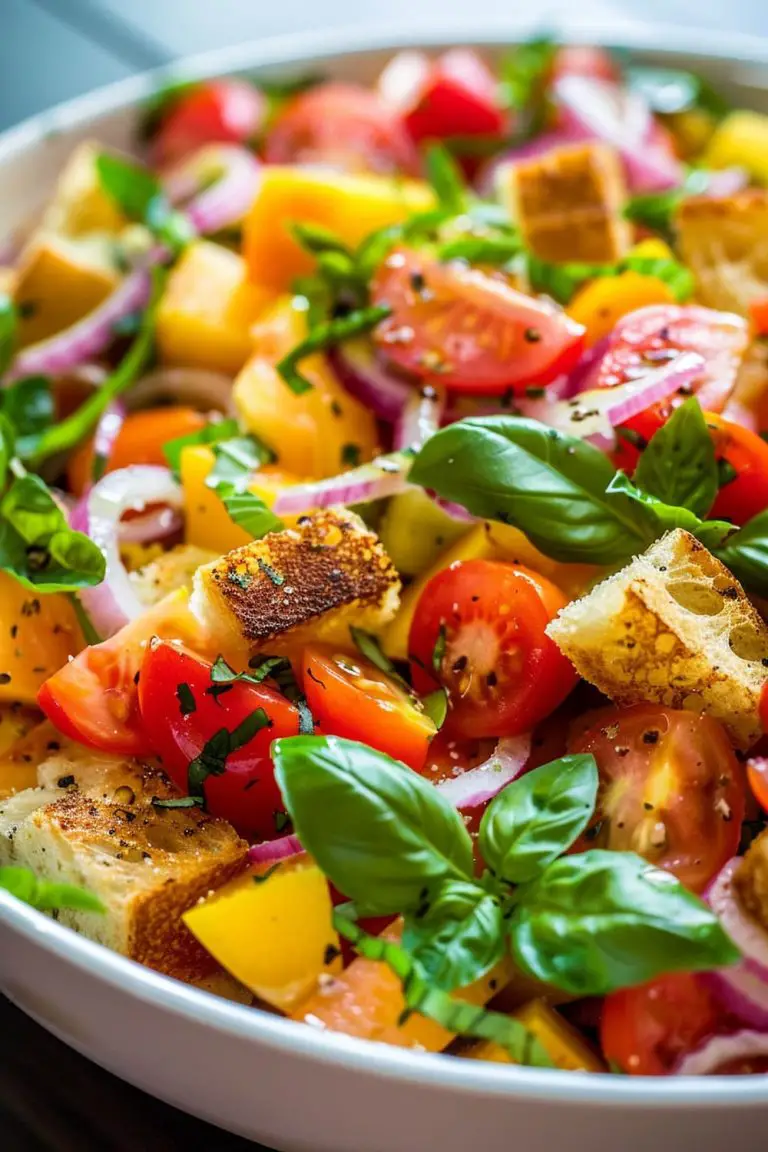Indian Jeera Rice Easy Recipe (Cumin Rice)

Indian Jeera Rice is a celebrated Indian cuisine recipe cherished across the globe for its aromatic simplicity and comforting warmth. Did you know that this dish, with its earthy, nutty flavor of cumin, can transform plain rice into a fragrant delight that complements almost any Indian meal?
In just 20 minutes, with minimal, readily available ingredients, you can create an authentic Indian Jeera Rice masterpiece right in your kitchen.
Why You’ll Love This Recipe:
- Unmatched Simplicity: Requires just a few ingredients for a side dish that feels both gourmet and effortlessly easy.
- Aromatic Indulgence: The cumin seeds lend a uniquely warm and earthy aroma that elevates your meal experience.
- Flexibility: Perfectly complements a wide array of dishes, from robust curries to simple dals, making it a versatile addition to your culinary repertoire.
- Quick to Prepare: Ideal for busy weeknights when time is of the essence but flavor can’t be compromised.
In this guide, you’ll learn
- Some Interesting Facts and Origin Story of Jeera Rice
- How to make mouth-watering Jeera Rice in your kitchen
- Common Mistakes To Avoid, Pro Tips To Enhance The Taste Of the Dish
- FAQs (Reader Questions Answered) and much more stuff!
So, grab your apron, and let’s dive in!
Some Interesting Facts About Jeera Rice
- While traditionally made with just cumin seeds, Jeera R ice welcomes variations. You can easily adapt it to include peas, carrots, or even cashews, making it a perfect fit for different dietary preferences or meal times.
- Cumin is not only valued for its flavor but also for its digestive properties in Ayurveda, making Jeera Rice both a tasty and therapeutic dish.
There are a few regional variations of this recipe:
- Northern India: The Jeera Rice here is often prepared with ghee (clarified butter), which lends a rich, nutty flavor to the dish.
- Southern India: Sometimes cooked with coconut oil or mixed with curry leaves for a regional twist, showcasing the south’s affinity for coconut and curry leaves.
- Western and Eastern India: Variations might include the addition of peas or cashews, reflecting local tastes and preferences for added texture and richness.
How to Make Jeera Rice At Home As A Beginner
- Preparation Time: 10 minutes
- Cooking Time: 20 minutes
- Total Time: 30 minutes
Ingredients:
- 1 cup Basmati rice (200 grams) – The star of the dish. Basmati rice is known for its fragrant aroma and long, slender grains.
- 2 tablespoons Ghee (30 ml) (Alternative: Coconut oil for a vegan option) – Adds richness and a nutty aroma.
- 1 teaspoon Cumin seeds (5 grams) – The ‘Jeera’ in Jeera Rice, provides a distinct earthy flavor.
- 2 cups Water (480 ml) – For cooking the rice.
- Salt to taste – Enhances the flavors.
- Fresh cilantro for garnish – Adds a touch of freshness.
- Optional: A pinch of turmeric for color and a dash of lemon juice for a slight tang.
Instructions:
Rinse the Rice:
Begin by thoroughly washing the Basmati rice under cold running water until the water runs clear. This removes excess starch and prevents the rice from becoming sticky.
After that, I like to keep them in a bowl of water for a few minutes but that’s not important.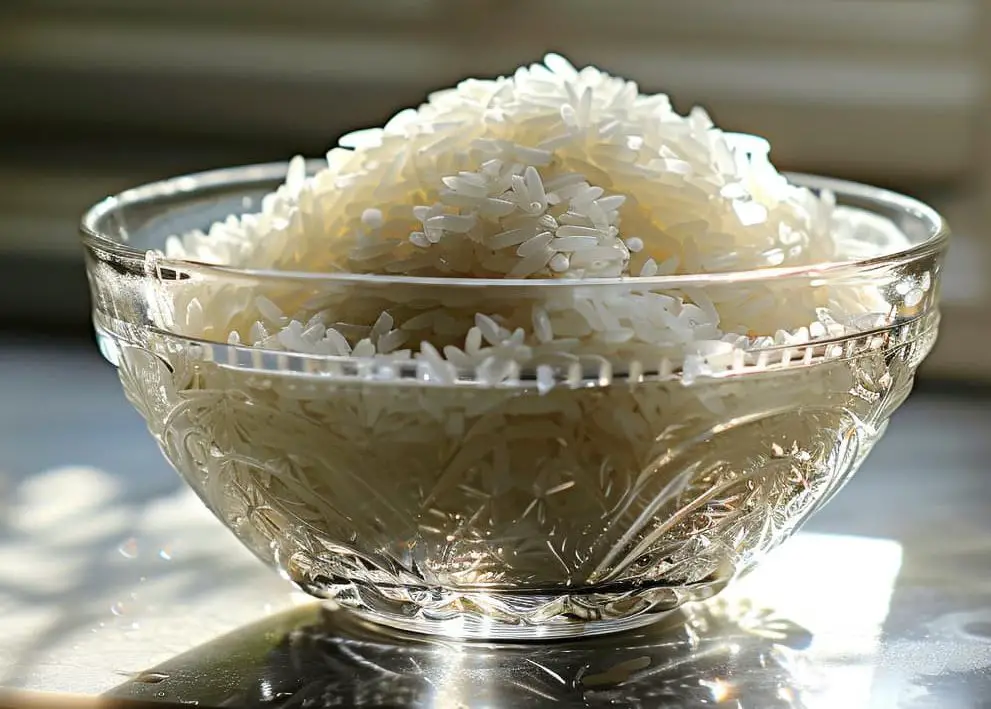
Heat the Fat:
In a medium-sized pot, heat the ghee (or coconut oil or olive oil) over medium heat.
![In a medium-sized pot [2 tablespoons of olive oil] is there on induction cooker](https://tastycookingaroma.com/wp-content/uploads/2024/04/almostawake21_In_a_medium-sized_pot_2_tablespoons_of_olive_oi_c17a0c46-7203-4c60-868e-9896a96a799d_3-1-e1712292834867.jpg)
This step is crucial for infusing the rice with flavor from the get-go.
Crackle the Cumin:
Add the cumin seeds to the hot ghee. Wait until they start to sputter — a sign they’re releasing their flavors.
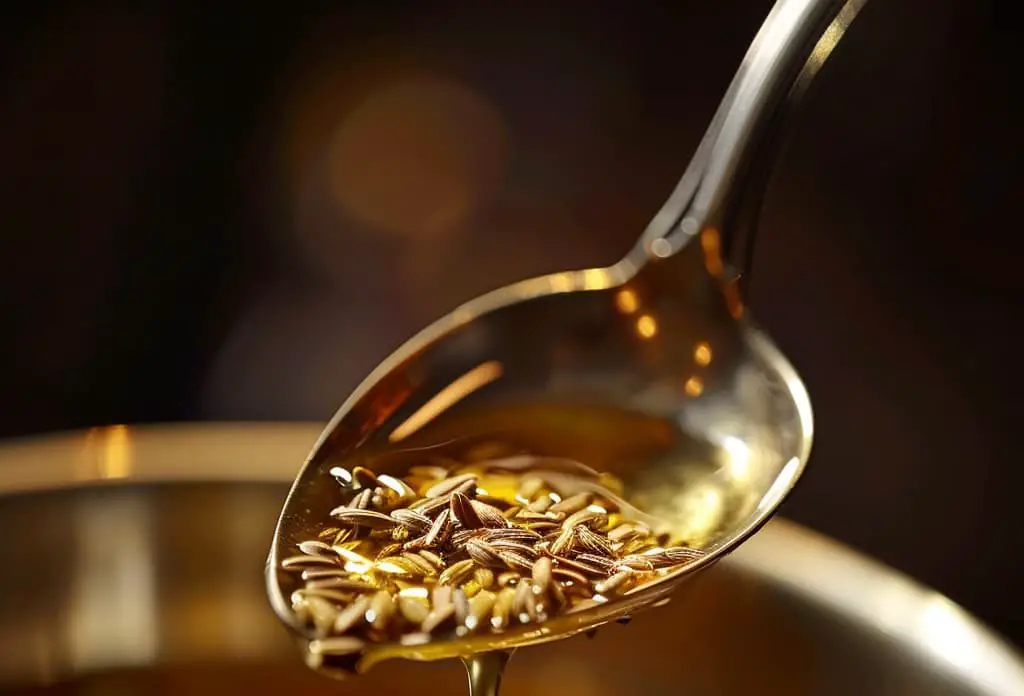
The aroma of cumin crackling in ghee is simply intoxicating and the foundation of our dish.
Cook the Rice:
- Add the rinsed rice to the pot, stirring gently to coat the grains with the ghee and cumin. Sauté for about 1-2 minutes. This helps to toast the rice slightly, locking in the fragrance.
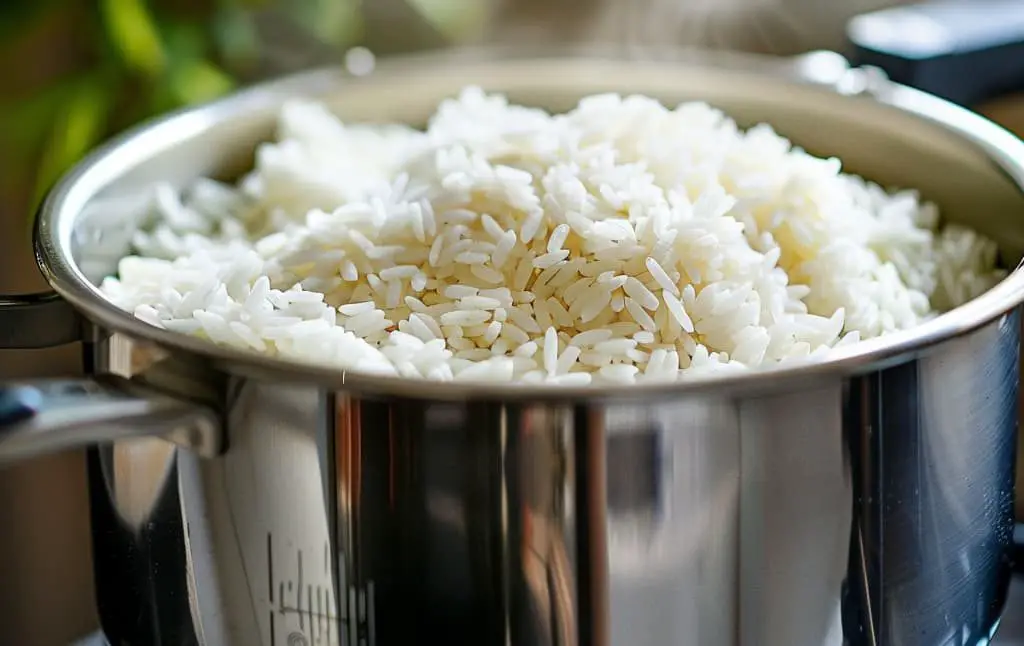
- Resist the urge to peek while the rice is cooking. Keeping the lid on ensures the steam cooks the rice evenly.
Add Water and Season:
- Pour in the water and add salt to your taste. If using, this is the time to add a pinch of turmeric and a dash of lemon juice. Stir once to combine everything evenly.
- Finding the perfect water-to-rice ratio is key. Too much water and you’ll have mushy rice; too little, and it’ll be undercooked. The 2:1 water and rice ratio here should be just right for fluffy, separate grains.
Simmer:
Bring the mixture to a boil, then reduce the heat to low.
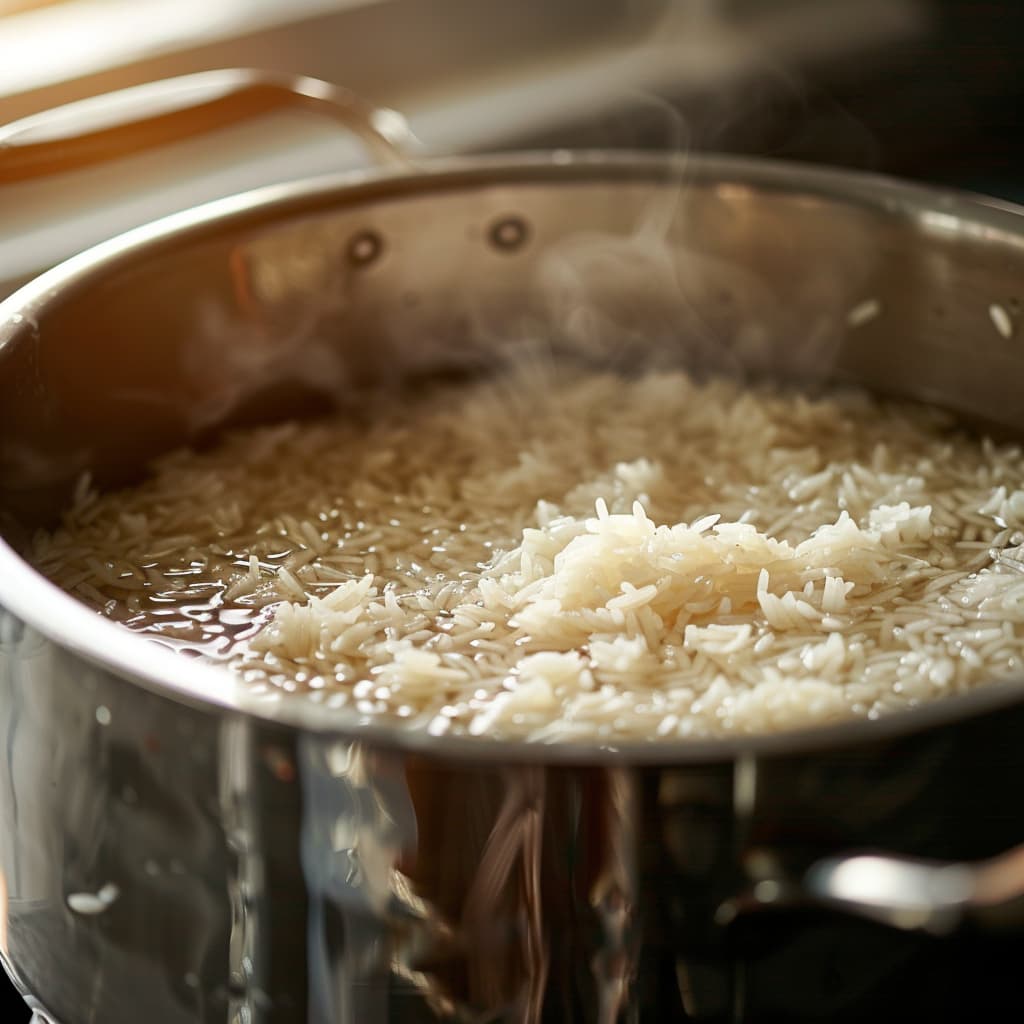
Cover and simmer for about 18-20 minutes, or until the water is absorbed and the rice is fluffy.
Rest the cooked rice:
- Turn off the heat and let the rice sit, covered, for 5 minutes. This allows the grains to firm up slightly and become perfectly fluffy.
- This step might seem minor, but it plays a significant role in the texture of the final dish.
The resting period allows the rice to continue steaming gently in its own heat, ensuring that every grain is fully cooked through and separates easily. It’s tempting to skip this step in eagerness to serve the dish, but patience here really pays off.
The grains of rice will firm up just enough, preventing them from breaking when you fluff them with a fork, leading to a presentation that’s as appealing as its taste.
Fluff and Serve:
- When it’s time to fluff the rice, use a fork rather than a spoon. Gently fluff the rice with a fork to separate the grains.
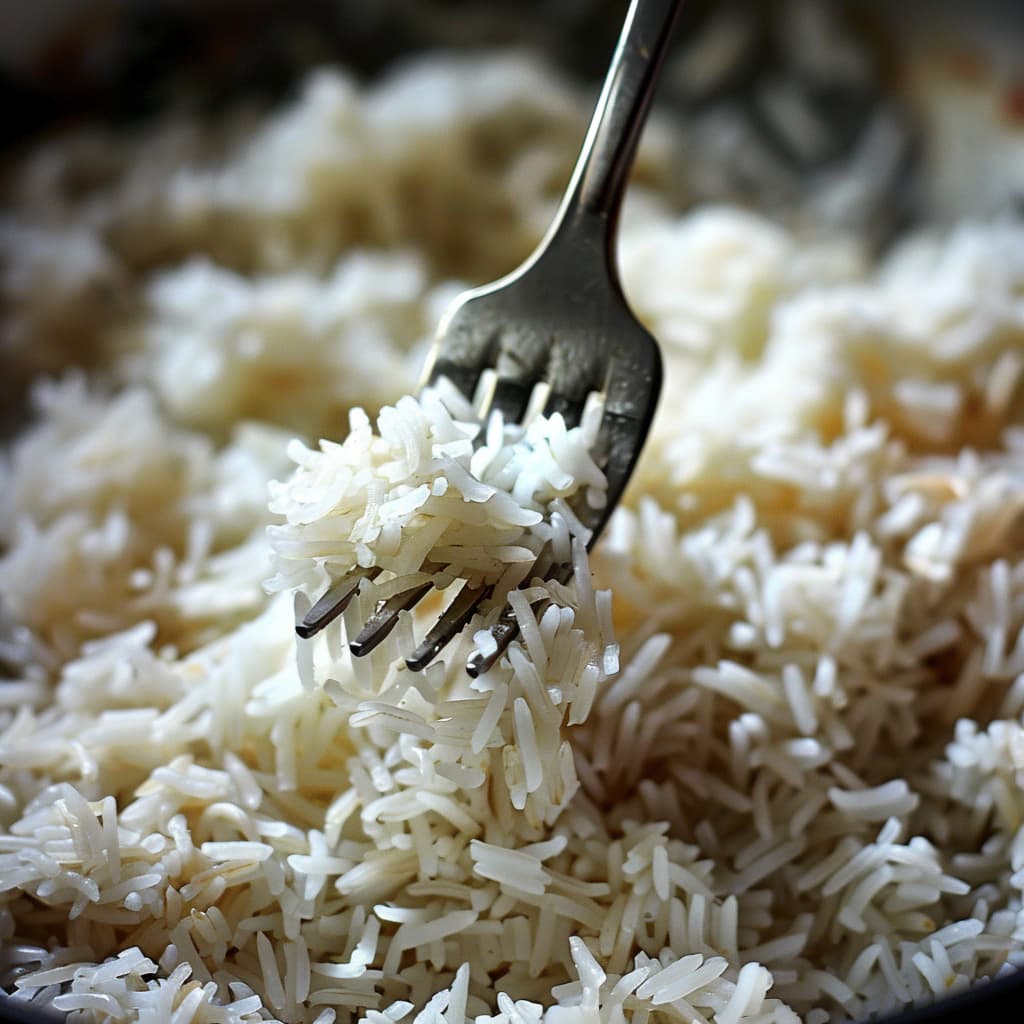
A fork’s tines gently separate the grains without crushing them, preserving the integrity of each fragrant, fluffy piece of rice.
Start from the outside of the pot and gently work your way in, fluffing and lifting the rice to let any trapped steam escape. This method ensures that the rice at the bottom doesn’t become too dense or stick together, giving you perfectly cooked Jeera Rice throughout.
- Transfer to a serving dish and garnish with fresh, chopped cilantro.
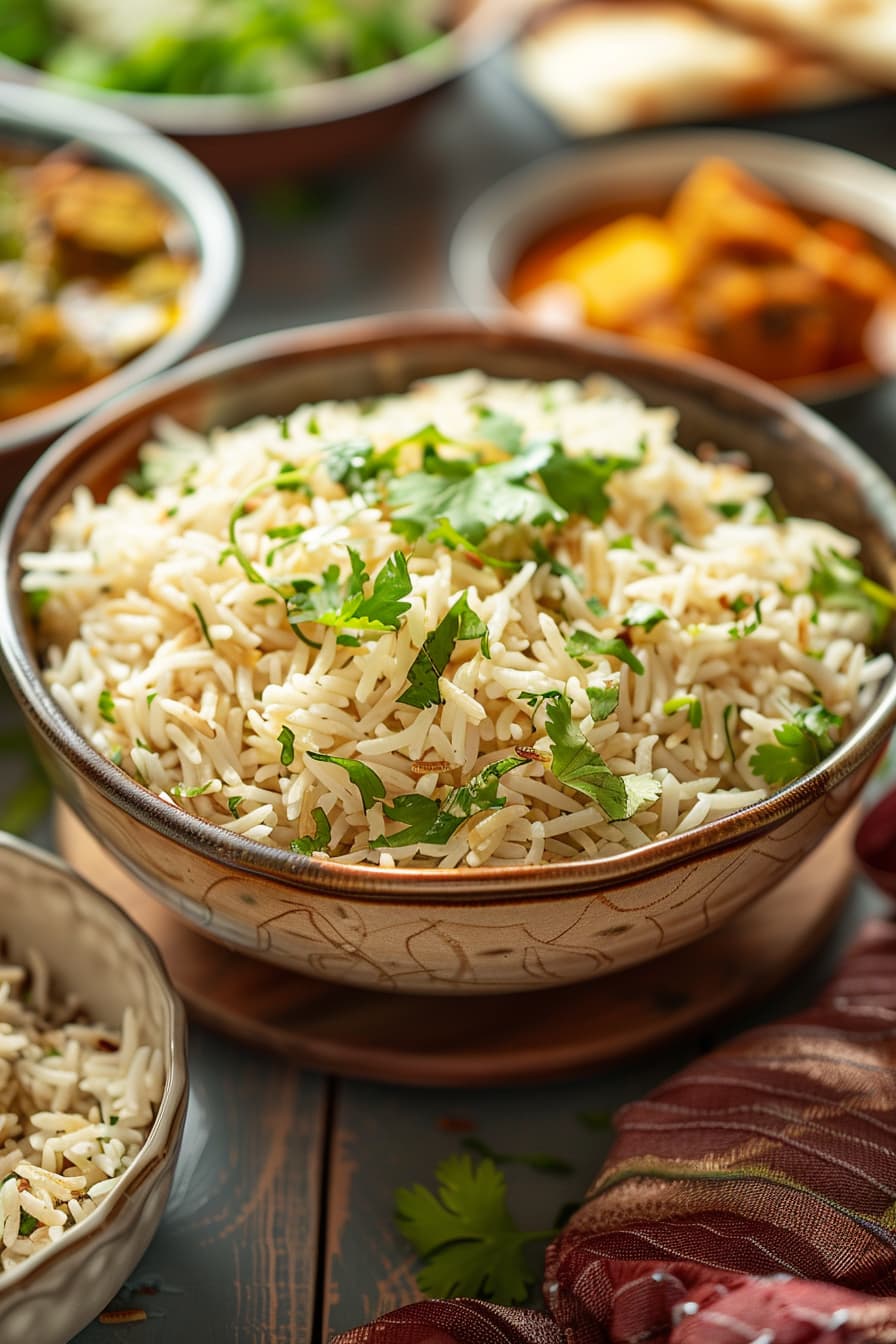
Mistakes To Avoid While Making Jeera Rice
Ingredient Selection:
- Common Error: Using old or stale cumin seeds. Stale seeds lose their potency and won’t impart the desired aroma to your rice.
- Solution: Always use fresh, whole cumin seeds for the best flavor. Their freshness is key to achieving the distinctive jeera aroma.
- Common Error: Opting for the wrong type of rice.
- Solution: Basmati rice is preferred for its long grains and fragrant nature. Ensure it’s of good quality and ideally aged, as this rice type fluffs up well and each grain separates beautifully after cooking.
Preparation Pitfalls:
- Common Error: Insufficient rinsing of rice.
- Solution: Rinse the rice thoroughly under cold water until the water runs clear. This removes excess starch and prevents the rice from becoming sticky.
- Common Error: Incorrect rice-to-water ratio.
- Solution: Use the right water ratio; typically, it’s 1:2 for rice to water. However, this can vary slightly depending on the rice’s age and type, so adjust as needed.
Cooking Techniques:
- Common Error: Cooking at the wrong temperature.
- Solution: After bringing the rice to a boil, reduce the heat to a simmer and cover. Cooking on too high heat can cause the water to evaporate too quickly, leaving the rice undercooked.
- Common Error: Stirring the rice too often.
- Solution: Avoid stirring the rice once it’s cooking. Disturbing it can break the grains and release more starch, making the rice sticky.
Seasoning and Flavoring:
- Common Error: Over or under-seasoning, particularly with salt.
- Solution: Season cautiously. You can always add more salt towards the end of cooking, but removing it once added is impossible. Taste the water after adding salt; it should be slightly less salty than seawater.
- Common Error: Adding too many additional flavors.
- Solution: Jeera Rice is celebrated for its simplicity. While it’s okay to add a bay leaf or a cinnamon stick for depth, avoid over-complicating it with too many spices that can overshadow the cumin’s earthy flavor.
Presentation Tips:
- Common Error: Clumpy or mushy rice.
- Solution: For a fluffy texture, let the cooked rice sit covered for 5-10 minutes after turning off the heat. Then, fluff it gently with a fork before serving. This resting period allows the steam to distribute moisture evenly.
- Common Error: Lackluster presentation.
- Solution: Garnish with freshly chopped cilantro or a sprinkle of fried cumin seeds for an added touch of elegance. Serve it in a high-rimmed bowl or platter to showcase the fluffy, separated grains.
Pairing Suggestions for Jeera Rice
- Main Courses:
Rich and creamy dishes like Paneer Butter Masala or Chicken Tikka Masala complement the lightness of Jeera Rice, allowing the spices to shine without overpowering each other.
-
- Butter Chicken: The creamy, rich flavors of Butter Chicken pair beautifully with the lightness of Jeera Rice, making for a classic combination that’s beloved by many.
- Chana Masala: For a vegetarian option, the hearty and spicy Chana Masala offers a robust contrast to the subtle flavors of Jeera Rice, creating a satisfying and protein-rich meal.
-
- Palak Paneer: This vibrant, spinach-based dish adds a nutritious and colorful component to the meal. Its smooth texture and mild spices complement the cumin’s warmth in the rice.
- Side Dishes:
- A cooling Cucumber Raita or a tangy Kachumber Salad balances the warmth of the rice and any spicy accompaniments.
- Mango Chutney: Introduce a sweet and tangy element with homemade mango chutney, which can elevate the meal’s flavors and add a delightful contrast.
- Roasted vegetables, spiced minimally with salt, pepper, and a touch of cumin, can echo the flavors within Jeera Rice.
- Beverages:
- A glass of chilled lassi, either sweet or salted, complements the meal’s flavors and offers refreshment.
- For those preferring something warm, Masala Chai, with its blend of spices, makes a comforting pairing.
Seasonal Variation for Jeera Rice
- Spring:
- Incorporate fresh green peas or asparagus into the rice for a pop of spring color and a sweet, tender crunch.
- Summer:
- Add lemon zest or a handful of fresh mint leaves to the rice before serving for a refreshing, citrusy lift suitable for summer’s heat.
- Fall:
- Mix in roasted pumpkin or sweet potatoes. Their sweetness complements the earthiness of the cumin, offering a cozy, autumnal twist.
- Winter:
- Stir through caramelized onions and toasted nuts such as almonds or cashews for added warmth and texture, making the dish more comforting for the cold months.
Always Keep In Mind, that the inclusion of newer veggies or spices can end up impacting the overall taste of the dish, so you may need to adjust your other spices or salt portions to counter that.
Common Problems You May Face While Cooking Jeera Rice
Rice Preparation
Problem: Your rice turns out sticky or mushy.
Solution: The key to fluffy Jeera Rice lies in washing the rice thoroughly before cooking. Rinse under cold water until the water runs clear to remove excess starch. Additionally, ensure you’re using the correct water-to-rice ratio, typically 2:1 for Basmati rice.
Cooking the Cumin
Problem: The cumin seeds burn or don’t release their full aroma.
Solution: Heat the oil or ghee over a medium flame before adding the cumin seeds. They should sizzle upon contact but not burn. If they start to darken too quickly, reduce the heat. This process should unlock their earthy flavor without bitterness.
Flavor Balance
Problem: The dish tastes bland or overly spiced.
Solution: Start with a moderate amount of salt, tasting as you go, and adjust accordingly. If you’re worried about overpowering the rice with cumin, remember that a teaspoon of cumin seeds for each cup of rice usually strikes the right balance.
Cooking the Rice
Problem: The rice is undercooked or overcooked.
Solution: Once you add the water, bring it to a boil, then lower the heat to a simmer and cover the pot. A tight-fitting lid helps steam the rice evenly. Check for doneness at the 18-minute mark; the rice should be tender but not split. If it’s still hard, add a little more water and continue cooking.
Serving
Problem: The rice looks unappetizing or clumps together when served.
Solution: Let the rice sit for 5 minutes after turning off the heat, then fluff it gently with a fork. This rest period allows the grains to firm up slightly, ensuring they don’t break when you fluff them. For presentation, consider garnishing with fresh herbs like chopped cilantro or mint for a pop of color and freshness.
Pro Tips for Perfecting Jeera Rice
Quality of Ingredients:
- Use the best quality Basmati rice you can find. Its long grains and fragrant aroma are key to authentic Jeera Rice. Age-old Basmati rice is preferable for its enhanced flavor and texture.
Rinse and Soak:
- Always rinse the rice thoroughly until the water runs clear to remove excess starch, which can cause stickiness. For an even more refined texture, soak the rice for 20-30 minutes before cooking to ensure the grains cook evenly and expand beautifully.
Toasting Cumin:
- Toast the cumin seeds in ghee or oil until they begin to crackle. This not only releases their aroma but also infuses the fat with flavor, which coats the rice grains as they cook.
The Water Ratio:
- The perfect water-to-rice ratio is crucial. Use a 1:2 ratio of rice to water for cooking on the stove. Adjust slightly if you soak the rice, as it will require less water.
Resting Time:
- After cooking, let the rice sit off the heat, covered, for about 5-10 minutes. This allows the grains to set and the steam to distribute evenly, resulting in fluffier rice.
FAQs about Jeera Rice (Reader Questions Answered)
Q: Can I make Jeera Rice with brown rice?
- A: Yes, but adjust the cooking time and water ratio. Brown rice takes longer to cook and generally requires more water. Start with a 1:2.5 ratio of rice to water and increase the cooking time to about 35-40 minutes.
Q: How can I keep the rice from becoming mushy?
- A: Be sure not to over-stir the rice while it’s cooking, as this can break the grains and release more starch. Also, ensure you’re using the correct amount of water and cooking it covered on a low simmer.
Q: Can I add vegetables to Jeera Rice?
- A: Absolutely! Peas, carrots, or bell peppers can be added to the rice before cooking to make it a more substantial dish. Just ensure the added vegetables are diced small enough to cook through evenly.
Q: How should I store leftover Jeera Rice, and how long will it last?
- A: Cool the rice completely before storing it in an airtight container in the refrigerator. It will last for up to 3 days. For reheating, sprinkle some water over the rice to prevent it from drying out and reheat it in the microwave or on the stove.
Q: Can I use olive oil instead of ghee?
- A: While ghee offers a traditional flavor, olive oil can be used as a healthier alternative. It won’t impart the same richness as ghee but will still allow the cumin seeds to release their aroma effectively.
Q1: My rice always sticks to the bottom of the pot. How can I prevent this?
- A1: To prevent sticking, ensure you’re using a heavy-bottomed pot to distribute heat evenly. Additionally, avoid stirring the rice once it starts cooking. If it’s a persistent issue, consider cooking your rice in a wider pot to spread out the grains more evenly.
Q2: Can I use leftover rice to make Jeera Rice?
- A2: Absolutely! In fact, using pre-cooked rice can yield excellent results as the grains are less likely to stick together. Just heat some ghee or oil, fry the cumin seeds, and then sauté the cooked rice until it’s heated through and infused with the cumin flavor.
Q3: How can I make my Jeera Rice more flavorful?
- A3: For an extra flavor boost, consider adding a bay leaf, a cinnamon stick, or a couple of cardamom pods along with the cumin seeds. These spices add depth and complexity to the dish without overwhelming the subtle cumin flavor.
Q4: What’s the best way to reheat Jeera Rice without drying it out?
- A4: The best way to reheat Jeera Rice is to sprinkle a little water over it and cover it loosely. You can then reheat it gently on the stove over low heat or in the microwave. The added water helps to steam the rice, keeping it moist.
Q5: I don’t have Basmati rice. Can I use another type of rice?
- A5: While Basmati rice is preferred for its aromatic and fluffy qualities, you can use other long-grain white rice as a substitute. The key is to adjust the water ratio if needed, as different types of rice may require more or less water.
Q6: My Jeera Rice turned out to be too salty. Is there a way to fix it?
- A6: If your rice is too salty, try adding a few boiled potatoes or more cooked, unsalted rice to the dish to absorb some of the excess salt. You can remove the potatoes before serving.
Q7: Can Jeera Rice be made in a rice cooker?
- A7: Yes, Jeera Rice can easily be adapted for a rice cooker. Start by frying the cumin in ghee or oil in a separate pan, then add it to the rice cooker along with the rice and water. Follow your rice cooker’s instructions for white rice.
Whether you’re a seasoned cook or new to Indian cooking, I hope these recipes inspire you to create a meal that delights your senses and brings comfort to your table.
I’m eager to hear about your cooking adventures with Jeera Rice and any companion dishes you decide to try. Did you stick to the classics, or did you introduce your own twist? Let me Know in the comments.

Indian Jeera Rice Easy Recipe (Cumin Rice)
Ingredients
- 1 cup Basmati rice 200 grams - The star of the dish. Basmati rice is known for its fragrant aroma and long, slender grains.
- 2 tablespoons Ghee 30 ml (Alternative: Coconut oil for a vegan option) - Adds richness and a nutty aroma.
- 1 teaspoon Cumin seeds 5 grams - The 'Jeera' in Jeera Rice, provides a distinct earthy flavor.
- 2 cups Water 480 ml - For cooking the rice.
- Salt to taste - Enhances the flavors.
- Fresh cilantro for garnish - Adds a touch of freshness.
- Optional: A pinch of turmeric for color and a dash of lemon juice for a slight tang.
Instructions
Rinse the Rice:
- Begin by thoroughly washing the Basmati rice under cold running water until the water runs clear. This removes excess starch and prevents the rice from becoming sticky.
- After that, I like to keep them in a bowl of water for a few minutes but that's not important.
Heat the Fat:
- In a medium-sized pot, heat the ghee (or coconut oil or olive oil) over medium heat.
- This step is crucial for infusing the rice with flavor from the get-go.
Crackle the Cumin:
- Add the cumin seeds to the hot ghee. Wait until they start to sputter — a sign they're releasing their flavors.
- The aroma of cumin crackling in ghee is simply intoxicating and the foundation of our dish.
Cook the Rice:
- Add the rinsed rice to the pot, stirring gently to coat the grains with the ghee and cumin. Sauté for about 1-2 minutes. This helps to toast the rice slightly, locking in the fragrance.
- Resist the urge to peek while the rice is cooking. Keeping the lid on ensures the steam cooks the rice evenly.
Add Water and Season:
- Pour in the water and add salt to your taste. If using, this is the time to add a pinch of turmeric and a dash of lemon juice. Stir once to combine everything evenly.
- Finding the perfect water-to-rice ratio is key. Too much water and you'll have mushy rice; too little, and it'll be undercooked. The 2:1 water and rice ratio here should be just right for fluffy, separate grains.
Simmer:
- Bring the mixture to a boil, then reduce the heat to low.
- Cover and simmer for about 18-20 minutes, or until the water is absorbed and the rice is fluffy.
Rest the cooked rice:
- Turn off the heat and let the rice sit, covered, for 5 minutes. This allows the grains to firm up slightly and become perfectly fluffy.
- This step might seem minor, but it plays a significant role in the texture of the final dish.
- The resting period allows the rice to continue steaming gently in its own heat, ensuring that every grain is fully cooked through and separates easily. It's tempting to skip this step in eagerness to serve the dish, but patience here really pays off.
- The grains of rice will firm up just enough, preventing them from breaking when you fluff them with a fork, leading to a presentation that's as appealing as its taste.
Fluff and Serve:
- When it's time to fluff the rice, use a fork rather than a spoon. Gently fluff the rice with a fork to separate the grains.
- A fork's tines gently separate the grains without crushing them, preserving the integrity of each fragrant, fluffy piece of rice.
- Start from the outside of the pot and gently work your way in, fluffing and lifting the rice to let any trapped steam escape. This method ensures that the rice at the bottom doesn't become too dense or stick together, giving you perfectly cooked Jeera Rice throughout.
- Transfer to a serving dish and garnish with fresh, chopped cilantro.

